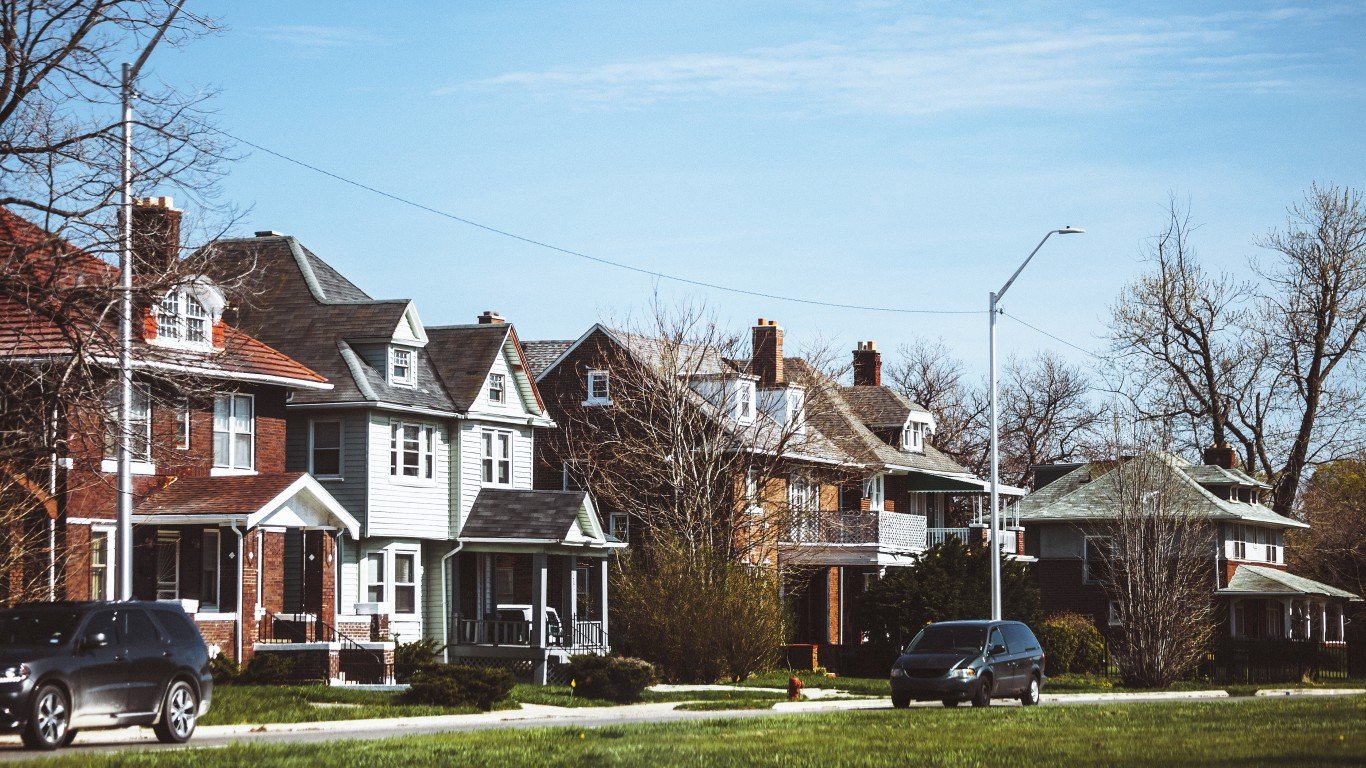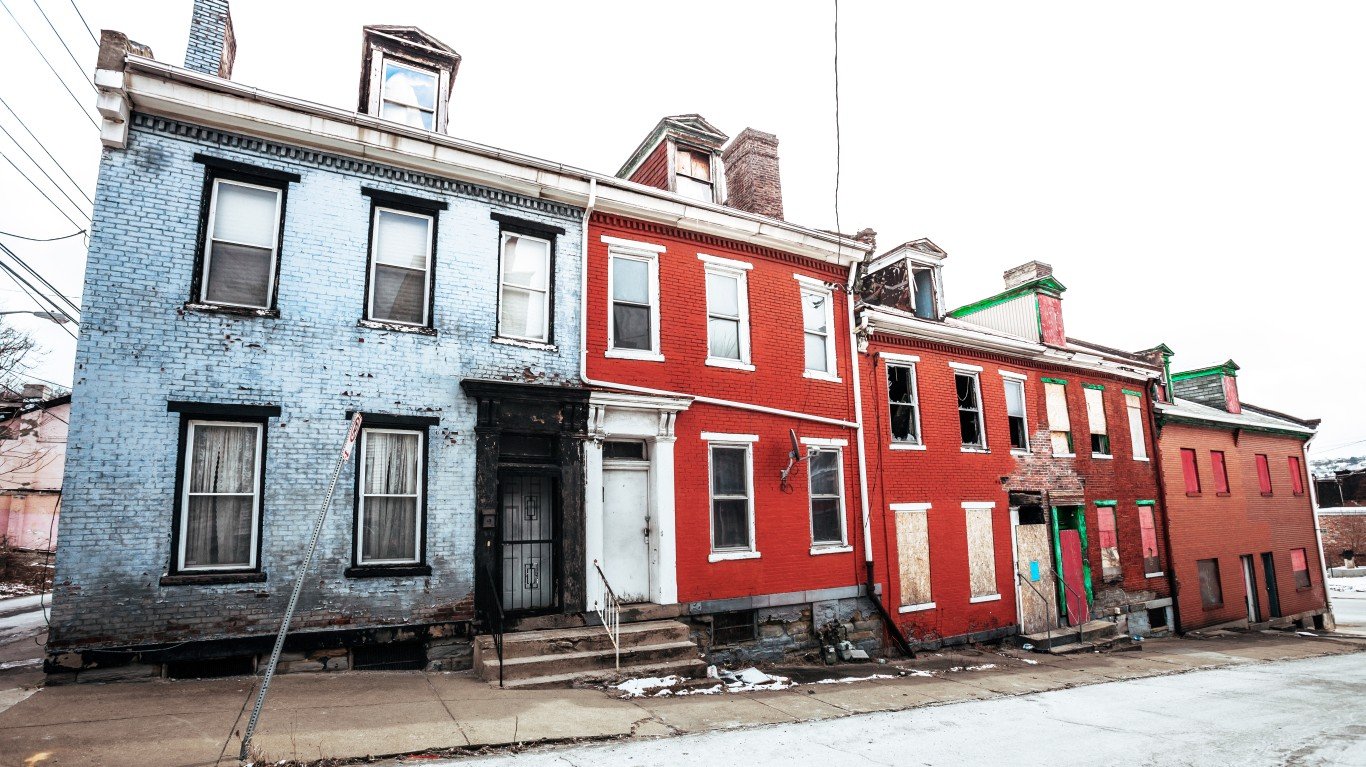 Housing has dropped more than 50% in many areas in the US, and there are few regions where prices are off less than 25%. Most housing experts do not believe the market will recover this year. Almost a quarter of all mortgages are underwater. People cannot sell the homes tethered to them without paying money to their banks at closing. The mortgage default rates in many states continue to rise, degrading the value of the homes near those seized by banks. Banks have a “shadow inventory” of foreclosed homes which they have not put on the market. When they do, they will be offered at steep discounts to get them off bank balance sheets. And the blight of unemployment has and will continue to keep the housing market weak.
Housing has dropped more than 50% in many areas in the US, and there are few regions where prices are off less than 25%. Most housing experts do not believe the market will recover this year. Almost a quarter of all mortgages are underwater. People cannot sell the homes tethered to them without paying money to their banks at closing. The mortgage default rates in many states continue to rise, degrading the value of the homes near those seized by banks. Banks have a “shadow inventory” of foreclosed homes which they have not put on the market. When they do, they will be offered at steep discounts to get them off bank balance sheets. And the blight of unemployment has and will continue to keep the housing market weak.
24/7 Wall St. looked at data from Fiserv Case-Shiller which gathers and analyzes housing information. We looked at the drop in home prices by metropolitan area, when home prices reached their lows, vacancy rates, the median income and unemployment rates for each metro area, and how much Case-Shiller projects prices will rise this year and next. Thirty-seven metro areas have home prices that are expected to increase more than 1% this year – a modest number compared to the 385 markets.
The twelve cities in which home prices will rise the most in 2011 are divided into two categories. The first are cities in the Northwest which have largely white populations, stable middle classes, and one or two industries that dominate employment. Some of these cities are remote, but large for their regions such as Idaho Falls, Cheyenne and Spokane. They are business and agricultural hubs for thinly populated areas which may stretch several hundred miles. This means that most have large distribution centers, universities, and research and medical centers which serve very large geographic areas. If Cheyenne were near Chicago, most of its major businesses would relocate downtown. The other factor that is common among many of these Northwest cities is that they have large military bases or defense contractors. These cities are prized by their residents for stability, homogeneity, and that they are dominated by a few industries which have been healthy over the last few years.
Four other cities on our list have been less fortunate economically. They are examples of what Case-Shiller describes as a change in the ability of people to buy homes. “The slide in prices has greatly improved home affordability: relative to household income, affordability is at or close to pre-bubble levels in nearly every metro area across the U.S,” the research firm says. A fine example is Madera-Chowchilla which is at the heart of the unemployment Bermuda Triangle in California which includes Stockton and Modesto. Parts of this region have had unemployment rates above 15% and some cases 20% brought on by the collapse of the housing market. Home prices in some parts of this area have halved, and, in the process, they have slowly become affordable for the limited number of people who can afford them. Home prices have started to rebound from ludicrously low levels.
If the 24/7 Wall St. review of The Housing Market The Will Rise The Most This Year shows anything, it is that two kinds of real estate markets are rebounding. The first of these was always stable, but was hurt by the recession. New jobs in these regions have brought renewed buying. The second, wild cards of the real estate recovery–a very different group–will recover because the collapse of prices has been so severe that the cost to buy a home is at decades-low levels.
The Housing Markets That Will Rise Most This Year
10. Great Falls, Montana
 > Projected Price Increase Through 2011: +3.1%
> Projected Price Increase Through 2011: +3.1%
> Unemployment Rate: 6.5%
> Median Family Income: $56,600
> Vacancy Rate: 9.3%
> Drop From Peak: -2%
Great Falls is Montana’s third biggest city. The area is home to the Montana State University Technology Center and Malmstrom Air Force base. These steady government and nonprofit jobs have precipitated a quick economic recovery for the area, with home prices expected to increase 3.1% by the end of 2011, and an additional 1.4% by the end of 2012.
Tied for 9th. Cheyenne, Wyoming
 > Projected Price Increase Through 2011: +3.4%
> Projected Price Increase Through 2011: +3.4%
> Unemployment Rate: 7.1%
> Median Family Income: $71,300
> Vacancy Rate: 7.1%
> How Much The Price is Down From Peak: -0.6%
Cheyenne is the biggest city in Wyoming. The area is heavily middle class and very few residents live below the poverty line. Cheyenne is home to an Air Force base and features an extensive railroad system used for shipping agricultural commodities. Cheyenne is one of the distribution hubs for the entire state. This has prevented the city from being hit too hard during the recession. Home prices fell only 0.6% from their peak, by far the lowest amount among the cities on this list. Cheyenne’s housing market is now expected to rise 3.4% through 2011.
- 24/7 Wall St. & Harris Interactive have teamed up to do a national survey to better understand American travel habits. As one of our informed readers, we would love to hear from you! This survey should only take a few minutes and the results will be featured in an upcoming article. Please click HERE to begin.
Tied for 9th. Kennewick-Pasco-Richland, Washington
 > Projected Price Increase Through 2011: +3.4%
> Projected Price Increase Through 2011: +3.4%
> Unemployment Rate: 7.4%
> Median Family Income: $62,000
> Vacancy Rate: 4.8%
>Drop From Peak: N/A
The Kennewick-Pasco-Richland area is one of five different Washington state metropolitan regions in the top ten housing markets expected to improve over the next year. The reason for its growth comes from its industries, which are all in areas which are prospering. The rural region has benefited heavily from surging commodity prices, and Forbes listed Kennewick as the number 2 area in the country for job growth. The area also contains stable employers including the Pacific Northwest National Laboratory. Home prices are expected to increase 7.7% in through 2012, compared to a national average of a decline of 1.2%.
Tied for 9th. Myrtle Beach-Conway, South Carolina
 > Projected Price Increase Through 2011: +3.4%
> Projected Price Increase Through 2011: +3.4%
> Unemployment Rate: 11.1%
> Median Family Income: $50,500
> Vacancy Rate: 39.7%
> Drop From Peak: -32%
The Myrtle Beach-Conway region thrives on tourism. The area welcomes 4.6 million visitors annually, has 1,900 restaurants, 460 hotels and 89,000 accommodation units. Myrtle Beach has been called the Golf Capitol of the World as it has 120 golf courses. The recession extensively damaged the area’s economy. From April 2000 to February 2011, unemployment increased from 3.5% to 11.1%. Housing prices decreased by 32% from their 2006 peak, the second greatest percentage among areas on this list. As Americans resume traveling, tourism and home prices will once again increase in the Myrtle Beach-Conway area.
8. Idaho Falls, Idaho
 > Projected Price Increase Through 2011: +4.4%
> Projected Price Increase Through 2011: +4.4%
> Unemployment Rate: 7.9%
> Median Family Income: $56,900
> Vacancy Rate: 7.6%
> Drop From Peak: -10.6%
Like Kennewick-Pasco-Richland, Idaho Falls is another center for the farming industry which stands to benefit from the commodity boom. The city has been rated as one of the best places in the country to raise children by Bloomberg Businessweek, as well as one of the top 100 cities in 2010 by CNNMoney. Idaho Falls’ job market is also bolstered by the Idaho National Laboratory, formerly the Idaho Reactor Testing Center. Home prices in the region are expected to increase 4.4% both this year and next year.
7. Bremerton-Silverdale, Washington
 > Projected Price Increase Through 2011: +4.5%
> Projected Price Increase Through 2011: +4.5%
> Unemployment Rate: 8%
> Median Family Income: $76,600
> Vacancy Rate: 9.5%
> Drop From Peak: -22.3%
Bremerton-Silverdale is a heavily middle-class area with a median family income of $76,600, higher than the national average of $62,000. The region is a prime location for defense contractors, as well as for shipping. It is also located near Seattle, giving its residents access to jobs at big businesses there. Despite this, home prices in the area decreased 22.3% from 2007. Prices are expected to increase dramatically in the next couple of years, however. Through 2011, they are expected to jump 4.5%, and through 2012 they are expected to go up an additional 11.4%.
6. Grand Junction, Colorado
 > Projected Price Increase Through 2011: +4.8%
> Projected Price Increase Through 2011: +4.8%
> Unemployment Rate: 11.3%
> Median Family Income: $60,900
> Vacancy Rate: 7.3%
> Drop From Peak: -26.9%
Grand Junction is a generally affluent city. The area relies heavily on tourism along with the oil and natural gas industries. The recession hit the area especially hard. Unemployment was at an extremely low 3.2% in April 2000, the lowest rate among areas on this list. By February 2011, unemployment had increased to 11.3%, the second highest among areas on this list and 2.4 percentage points higher than the national average. Now that tourism is back up and Grand Junction has returned to being an oil boomtown, the job and housing markets are recovering.
5. Bellingham, Washington
 > Projected Price Increase Through 2011: +4.9%
> Projected Price Increase Through 2011: +4.9%
> Unemployment Rate: 9%
> Median Family Income: $59,000
> Vacancy Rate: 11.4%
> Drop From Peak: -13.8%
Bellingham, like Bremerton, is suburb of Seattle, which allows residents access to the city’s job market. Bellingham has several major hospitals and universities, and the abundance of steady institutional jobs has kept the population relatively economically stable. The city was one of the few to have vacancy rates drop between 2000 and 2010. Home prices are expected to increase 12.4% by the end of 2012.
4. Spokane, Washington
 > Projected Price Increase Through 2011: +5.2%
> Projected Price Increase Through 2011: +5.2%
> Unemployment Rate: 9.5%
> Median Family Income: $61,000
> Vacancy Rate: 7.1%
> Drop From Peak: -15.3%
Spokane is home to a number of commodities-based industries which are on the rebound from their recession-incurred lows. The city is a big center for forestry and agricultural business. Wood products, metal refineries, and food processing feed the local economy. The world’s largest producer of potash is also in Spokane. As the commodity industries recover further over the next year, home prices in the area are expected to increase 5.2%.
3. Tacoma, Washington
 > Projected Price Increase Through 2011: +5.5%
> Projected Price Increase Through 2011: +5.5%
> Unemployment Rate: 10%
> Median Family Income: $70,000
> Vacancy Rate: 7.8%
> Drop From Peak: -29.5%
Tacoma has a very stable middle-class population, with only a small percentage of families below the poverty line. The median home price in the fourth quarter of 2010 was $225,000 compared to a national average of $171,000. The biggest reason for the city’s projected recovery is the revival of the city’s main commodity-based industries: Tacoma has a major oil refinery center, and lumber and paper is also big in the city. The city’s home prices are expected to increase an average of 17.4% by the end of 2012.
2. Madera-Chowchilla, California
 > Projected Price Increase Through 2011: +5.8%
> Projected Price Increase Through 2011: +5.8%
> Unemployment Rate: 15.5%
> Median Family Income: $48,700
> Vacancy Rate: 11.8%
> Drop From Peak: 48.1%
Madera-Chowchilla is located in the center of the area hit hardest by California’s unemployment crisis. The unemployment rate is more than 5% greater than the national average of 8.9%. This is in large part due to the area, which is right around Stockton, and is in the part of the country that has suffered most from the construction recession. Roughly one-third of the area’s residents are living below the poverty line. Madera-Chowchilla has experienced the greatest decrease in home prices among the areas on this list – 48.1%, since its peak in 2006.
1. Mobile, Alabama
 > Projected Price Increase Through 2011: +8.4%
> Projected Price Increase Through 2011: +8.4%
> Unemployment Rate: 10.4%
> Median Family Income: $50,800
> Vacancy Rate: 11.1%
> Drop From Peak: 23.6%
Founded in 1702, Mobile is a major regional center for art, and features an opera, a ballet, and several art museums. The city has a long-standing, stable population, which will make room for an easier recovery than cities with migratory populations. Mobile is the largest city in the gulf region between St. Petersburg, Florida, and New Orleans. It saw some of the worst effects of both Hurricane Katrina and the BP Oil spill. As the impacts of both these disasters begin to subside, housing values have started to recover, and are projected to improve 8.4%, the fastest growth of any region in the country, by 2011. Home prices are projected to rise the following year an additional 7%, above the expected national average of 1.8%.
Douglas A. McIntyre, Michael B. Sauter, Charles B. Stockdale
Essential Tips for Investing: Sponsored
A financial advisor can help you understand the advantages and disadvantages of investment properties. Finding a qualified financial advisor doesn’t have to be hard. SmartAsset’s free tool matches you with up to three financial advisors who serve your area, and you can interview your advisor matches at no cost to decide which one is right for you. If you’re ready to find an advisor who can help you achieve your financial goals, get started now.
Investing in real estate can diversify your portfolio. But expanding your horizons may add additional costs. If you’re an investor looking to minimize expenses, consider checking out online brokerages. They often offer low investment fees, helping you maximize your profit.
Thank you for reading! Have some feedback for us?
Contact the 24/7 Wall St. editorial team.



